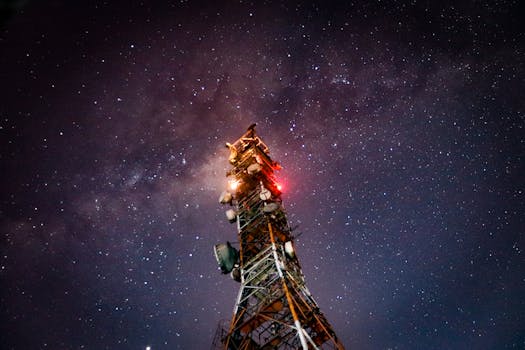
MEO Satellites: Revolutionizing Global Communication with Medium Earth Orbit Technology
MEO satellites, or Medium Earth Orbit satellites, are a type of satellite that operates in an orbit between 2,000 and 36,000 kilometers above the Earth’s surface. This orbit is higher than Low Earth Orbit (LEO) satellites but lower than Geostationary Earth Orbit (GEO) satellites. MEO satellites are designed to provide a range of services, including communication, navigation, and Earth observation.
The use of MEO satellites is becoming increasingly popular due to their unique advantages. One of the main benefits of MEO satellites is their ability to provide global coverage with fewer satellites than GEO satellites. This is because MEO satellites have a larger footprint than LEO satellites, allowing them to cover a wider area with a single satellite. Additionally, MEO satellites have a lower latency than GEO satellites, making them ideal for applications that require real-time communication.
How MEO Satellites Work
MEO satellites work by transmitting and receiving signals to and from Earth-based stations. The signals are transmitted through a network of ground stations, which are connected to the satellite via a radio frequency (RF) link. The satellite then amplifies and re-transmits the signal to its destination, allowing for global communication. MEO satellites use a variety of frequencies, including C-band, Ku-band, and Ka-band, to transmit and receive signals.
The orbit of a MEO satellite is not geostationary, meaning it does not remain stationary in the sky. Instead, it moves in a circular orbit around the Earth, completing one rotation every 6-12 hours. This requires the satellite to be tracked by a network of ground stations, which adjust their antennas to follow the satellite as it moves across the sky.
Applications of MEO Satellites
MEO satellites have a range of applications, including communication, navigation, and Earth observation. In the field of communication, MEO satellites are used to provide broadband internet access, mobile phone coverage, and television broadcasting. They are also used for maritime and aeronautical communication, providing critical connectivity for ships and aircraft.
In the field of navigation, MEO satellites are used to provide location information and timing signals. The most well-known example of this is the Global Positioning System (GPS), which uses a network of MEO satellites to provide location information to GPS receivers on the ground. Other navigation systems, such as GLONASS and Galileo, also use MEO satellites to provide navigation data.
Earth observation is another key application of MEO satellites. These satellites are used to collect data on the Earth’s environment, including weather patterns, sea level rise, and land use changes. MEO satellites can also be used to monitor natural disasters, such as hurricanes and wildfires, and provide critical information for emergency response and recovery efforts.
Advantages and Challenges of MEO Satellites
MEO satellites have a number of advantages, including global coverage, low latency, and high bandwidth. They are also less prone to interference than LEO satellites, making them ideal for applications that require high reliability. However, MEO satellites also have some challenges, including the need for complex tracking systems and the risk of signal degradation due to atmospheric interference.
Despite these challenges, the use of MEO satellites is expected to continue to grow in the coming years. As the demand for global communication and navigation services increases, MEO satellites will play an increasingly important role in meeting this demand. With their unique combination of global coverage, low latency, and high bandwidth, MEO satellites are an essential component of modern satellite communication systems.



